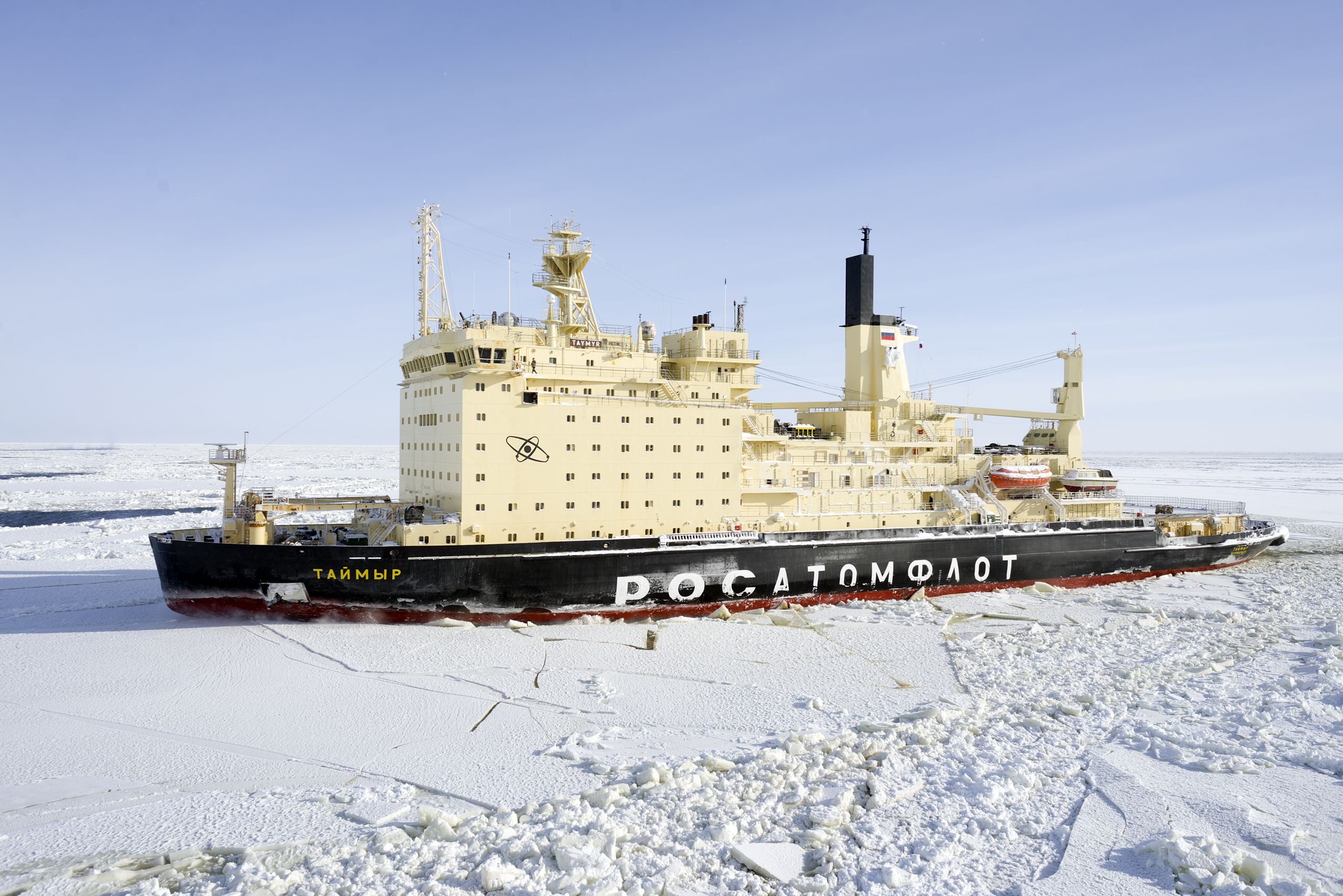Incredible video has emerged from Russia showing the massive Russia nuclear icebreaker Taymyr roaring past a group of adventurers and their Toyota trucks. The whole event looked as dangerous as it was thrilling for the off-roaders.
The super-sized encounter occurred on the frozen Yenisei River, near the Kara Sea. Russian media outlet RT states:
“Evgeny Shatalov, one of the drivers, said he managed to get close to the giant ship and touched it, posting his claim on Instagram. He also jokingly regretted that no one on the team touched the icebreaker with their tongue, as that would surely bring good luck to the whole endeavor. When the ship passed by, it was some -50 Celsius… The team is driving factory-stock Toyota pickup trucks to the far-north town of Dixon. The daring expedition started on January 15 from the city of Norilsk.”
The group is driving a squad of relatively unmodified Toyota pickups over long distances up in the northwestern reaches of Russia, much of which is frozen this time of year. It’s not clear if the Russian icebreaker even saw them as it approached, and considering how fast it was moving, things could have gone much worse.
One of the world’s largest icebreakers till this day, Taymyr was built in Finland for Russia during the last years of the Cold War. It was commissioned into service in 1989, and measures 490 feet in length, 92 feet wide, and displaces 21,000 tons. A single KLT-40M nuclear reactor located in the center of the ship’s hull provides a thermal output of 171 megawatts to power the ship. Taymyr can operate in areas where there is more ice than draft—with as little a 30 feet of actual depth available—making it ideal for cutting paths through large rivers and littoral channels, or rescuing ship trapped in them. A crew of 115 operates the ship but it can accommodate up to roughly 140 on certain missions. Taymyr has a sister-ship in her class, Vaygach, which remains operational.

Taymyr was designed to be safer than her predecessors with various redundancies and safety features factored into its design, but even with these features there have been incidents of small-scale radiation leaks. In 2011 a coolant leak in the ship’s ventilation system caused a radiation release, resulting in the Taymyr returning to port for emergency repairs. The age of the nuclear reactor seems to also be a concern as its life has been extended to nearly double its original design parameters. Russia has said time and again that the ship will be retired in recent years only to keep it in service.
Russia has a large fleet of icebreakers—roughly 40 in total and that number is growing—while the U.S. basically has one fully operational icebreaker and another that is about half operational at best. This reality has huge strategic implications because Russia is working on securing the arctic for itself, with energy reserves and emerging trade routes being major strategic prizes in the coming decades. The U.S. and its allies have slowly been working to up their frigid environment combat capability, but those moves are dwarfed by Russia’s own initiatives.
Moscow has ordered an entirely separate warfighting fleet for arctic region, including armed icebreaking frigates, among other ships and weapon systems. They have setup bases throughout the region, some of them quite elaborate, and drill their militarily for arctic operations on a regular basis. They are even modifying a massive specialized submarine for arctic operations. But icebreakers, especially large nuclear powered behemoths like Taymyr shown in the video, will be key in leveraging the region’s possibilities to the max, and you can’t exactly procure these from any shipbuilder on short notice.
The Coast Guard still hopes to build three new medium icebreakers by the early 2020s, and to possibly arm those vessels with cruise missiles in the future, but even though such a program is strategically imperative, it has proven to be troublesome to kickstart funding-wise. As of now the plan is for the U.S. Navy to fund the first ship, with the rest coming out of the USCG’s already relatively menial budget. But the idea is at least to get some sort of icebreaker into serial production so the line can be expanded in the future if need be.
High demand for icebreakers has even struck the Navy this year on the Great Lakes, where its newest Littoral Combat Ship, the USS Little Rock, has been stuck in Montreal due to ice. As it sits right now, the ship won’t be able to leave that port till sometime in late March, significantly delaying its arrival at its future homeport in Mayport, Florida. Other areas in the U.S. are in dire need of icebreakers as well due to the extremely cold temperatures, with flooding becoming a major concern.
